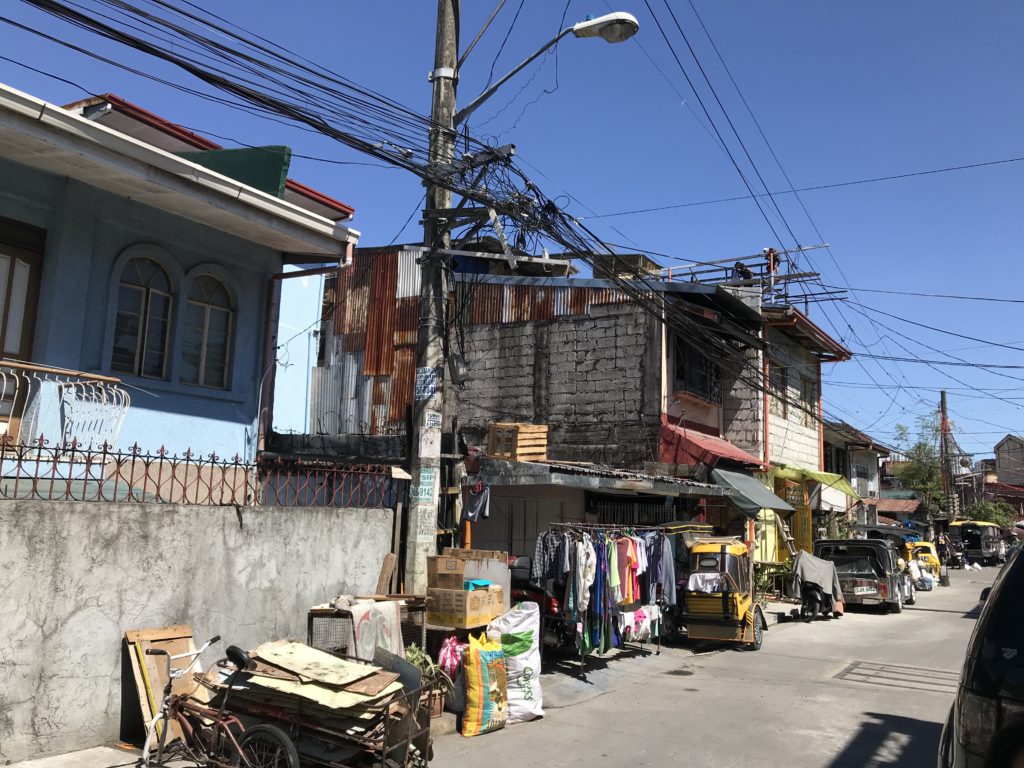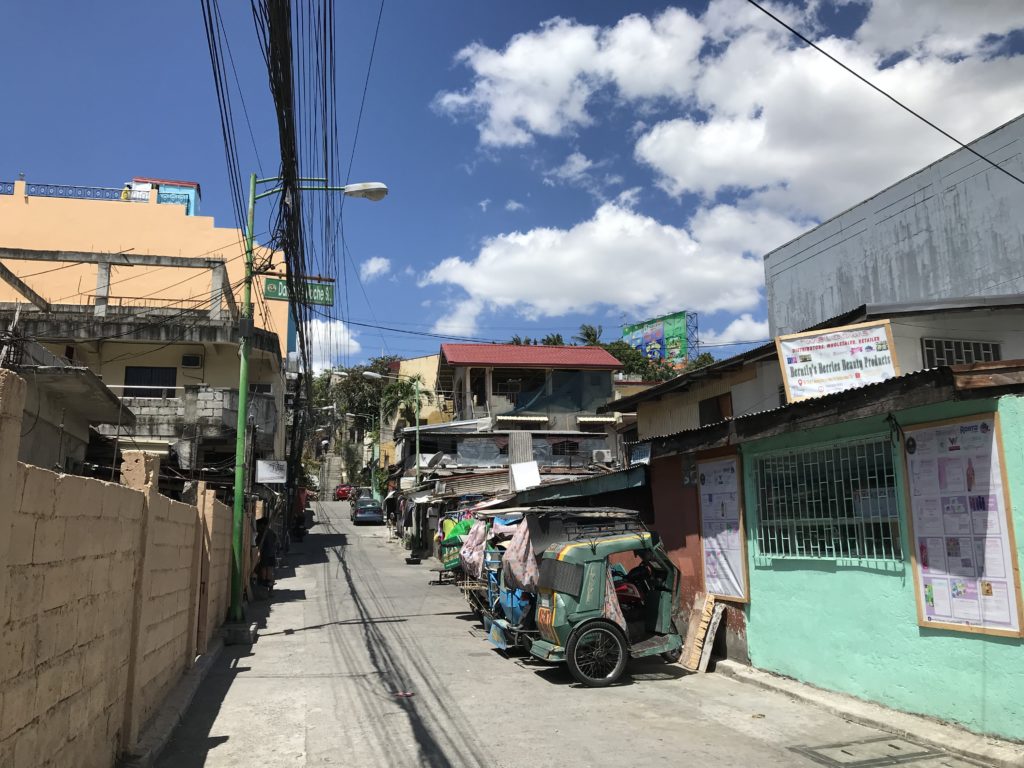With the growing danger of natural disasters, the race is on to expand access to programs that safeguard lives from the human-made danger of poorly built housing. With the common mission of building safer, stronger structures, Build Change and Simpson Strong-Tie have partnered for the Simpson Strong-Tie® Fellowship for Engineering Excellence program. This year’s fellow is Build Change Engineering & Design Services Director Tim Hart, SE. As with our previous fellows, Hart is documenting his journey with the program on the Simpson Strong-Tie Structural Engineering blog.
When I agreed to travel for Build Change to the Philippines and Indonesia in March, some of my friends and colleagues told me I was brave. Others told me I was crazy. One asked me whether I was afraid that I would not be able to get home. At the time, I felt it was safe to go since there were only a few cases reported in the Philippines, Indonesia and the United States. Even so, I waited until the last minute before I told my mother of the trip, knowing that she would be worried and would try to talk me out of going.

Things changed, of course, while I was in Manila. The President of the Philippines announced while I was there that Metro Manila was going into lockdown in order to contain the virus outbreak in the city. At the same time, an increasing number of COVID-19 cases were being reported not just in Manila, but also in Indonesia and the United States. As we all learned later, this was only the beginning of a rapid chain of events that have affected all of us, and at the time required me to leave the Philippines earlier than I had planned and return to the United States instead of traveling to Indonesia.
While my time in the Philippines was cut short, I was able to get a few productive days in, working with the Build Change Philippines team on developing tools for microfinance institutions (MFIs) to evaluate applications for home improvement loans. These loans are intended to facilitate the ability of homeowners to make structural improvements to their houses so the houses can better resist forces from earthquakes and typhoons. One of the challenges faced by our team has been to make the evaluation tools simple enough that a loan officer or homeowner could easily understand how to use them. Perhaps a more significant challenge has been to design the structural interventions such that the construction cost wouldn’t exceed the loan amounts and at the same time persuade homeowners to use the loans for structural upgrades in addition to any other home improvements they wanted. Most homeowners would think of using their loan to pay for a new kitchen or a remodeled bathroom, or to repair water leaks in the roof before they would think of retrofitting their house structure. It’s important, though, that families have a house that not only provides a clean, practical place to live every day, but also that provides safe shelter during and after a natural disaster.

The importance of quality of life issues came to my mind as I was walking through the streets of Pembo, one of the neighborhoods in Makati, Metro Manila, where Build Change has been working. Pembo was originally established after World War II as residences for enlisted men in the Philippine Army who were stationed at nearby Fort Bonifacio. Up on a hill, the area around Fort Bonifacio has developed into Global City, one of the wealthiest areas in the Philippines. At the same time in the valley below, Pembo and the other barrios for enlisted men became more densely populated and poorer. The population density in Pembo (just over 166,000 people per square mile) is about the same as Lower Manhattan. The neighborhoods of Pembo and Global City are visible to one another and separated only by a freeway. The transition from one neighborhood to the other was startling.
The houses in Pembo were mostly multistory and made of timber, masonry or a combination of the two. It was common to see houses up tight to each other, in some cases sharing a common wall. Since there is no room to expand outward, homeowners instead add another floor to their house, similar to what I have seen in other urban areas such as Port-au-Prince and Bogota. Those with the financial means to afford it prefer to build their houses using concrete block masonry surrounded by cast–in–place concrete frames. Those without financial resources tend to build their houses with timber using corrugated iron sheets for walls. I understand that it’s common in many Metro Manila neighborhoods for families to convert their houses from timber to concrete masonry as they acquire more money. Since it can often take years for a family to have enough money to do a full conversion, there are many houses that have been only partially converted. A partially converted building will likely perform poorly in an earthquake since the timber walls and the masonry walls will deform differently and behave incompatibly with each other, which increases the risk of significant damage or even collapse of the building. The risk is amplified by the fact that there is an active earthquake fault that runs through Pembo.
Our team also visited Barangay 773, one of the barangays (neighborhoods or wards) in Manila itself, where the program manager for the MFI project lives with her family. We did a walking tour of the neighborhood, and saw that the housing construction was similar to what we saw in Pembo. Most of the houses were multiple stories, and they were all made of masonry, timber, or a combination of the two. While we were there, we discussed the future phases of the MFI project and the needs of our MFI partners. For example, the current set of tools are designed for single–story masonry houses. However, in the urban neighborhoods of Metro Manila, multistory buildings and the use of timber framing (with and without masonry) are also very common. Thus, our MFI partners have expressed to us the need to have evaluation tools for these types of houses as well.

When I walked through the streets of Pembo and Barangay 773, I did not see very many people wearing face masks, nor did I see anyone practicing social distancing. Meanwhile in Global City and the central business district of Makati, there were many people who were wearing masks and staying apart from others. The COVID-19 outbreak was in the news every day in Metro Manila and people in all three areas appeared to be aware of it. However, the residents in Pembo and Barangay 773 appeared to be more concerned about the rumors of a lockdown of Metro Manila and their ability to work than they were about getting sick.

I can see similarities in the threats from pandemics and earthquakes. Both are unseen, both are infrequent, both occur without warning, and both could appear tomorrow or 100 years from now. When a family is having to deal with issues that are more visible and more sustained, such as economic distress, then I can see how unseen and infrequent hazards such as viruses and earthquakes might be considered less important. Who is going to worry about possibly catching a virus or possibly getting trapped in an earthquake–damaged building when they are struggling every day to put food on the table and to provide an adequate education for their children?
I do not see it as Build Change’s mission or my personal mission to convince the people in these neighborhoods to worry about earthquakes, especially in the middle of a global pandemic. They have many other more basic needs to worry about. Instead, I see it as my mission and as the mission of the organization to worry about earthquakes FOR these communities and to help give them a safe house so that they never have to worry about it collapsing on them. I want to provide them at least with the comfort (however small) that their families will still be safe after an earthquake or typhoon occurs.


